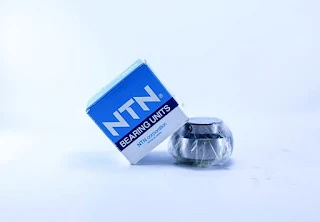BEARING UC 205D1 NTN - What is a Bearing Puller and When is It Used?
BEARING N216WC4 NSK
Bearing pullers are a type of tool used for removing bearings from machinery. They come in a variety of shapes and sizes, with different attachments that make them easier to use.
When is a bearing puller the right tool for the job?
What is a Bearing Puller and When is It Used?
A bearing puller is a tool used to remove bearings from motors, gears, and other rotating components. It is typically powered by an electric motor, and features a handlebar-mounted clamping mechanism that can grip the bearing firmly while the operator pulls on the handle.
Types of Bearing Pullers
Types of Bearing Pullers:
There are different types of bearing pullers available on the market today. Some bearing pullers are general-purpose tools that can be used for a variety of purposes, while others are designed for a specific type of task. Here is a look at some of the most common types of bearing pullers:
1. 50100 Series Jaw Pliers: These jaw-style bearing pullers are perfect for removing bearings from machines and other equipment. They have a triangular opening that allows them to grip and remove bearings quickly and easily.
2. 80500 Series Cylinder Head Bolt Removal Pliers: These pliers have an elongated U-shaped opening that makes it easy to grip and remove bolts from cylinder heads and other engine components. They also feature serrated jaws that help reduce the risk of damaging the part you're trying to remove.
3. 60000 Series Open End Wrench Pliers: These pliers have a rectangular opening that makes it easy to grip and remove bolts and screws in various sizes. They also feature blunt ends that reduce the risk of damage to the parts you're trying to remove.
4. 78500 Series Box End Wrench Pliers: Similar to the 60000 series pliers, these wrench pliers have a rectangular opening that makes it easy to grip and remove bolts and screws in various sizes. They also feature box-shaped ends that make it easier to hold onto the parts you're trying to remove.
5. 80000 Series Cylinder Head Wrench: This wrench is designed specifically for removing bolts and screws from cylinder heads. It features a long, thin handle that makes it easy to grip and torque the bolt or screw in place.
6. 80000 Series Cylinder Head Flat Wrench: This wrench is designed specifically for removing bolts and screws from cylinder heads. It features a flat, wide head that makes it easier to grip and torque the bolt or screw in place.
7. 80000 Series Cylinder Head Hex Wrench: This wrench is designed specifically for removing bolts and screws from cylinder heads. It features a hexagonal head that makes it easier to grip and torque the bolt or screw in place.
8. 80000 Series Cylinder Head Socket Wrench: This wrench is designed specifically for removing bolts and screws from cylinder heads. It features a socket head that makes it easier to grip and torque the bolt or screw in place.
Benefits of Using a Bearing Puller
A bearing puller is a useful tool that can be used to remove bearings from machines. They are especially useful when the bearings are difficult to remove using other methods, such as using a wrench. When using a bearing puller, you can avoid damage to the bearings and keep them in good condition.
The benefits of using a bearing puller include:
-You can avoid damage to the bearings
-You can keep the bearings in good condition
-It is easy to use
How to Use a Bearing Puller
A bearing puller is an important tool used in automotive and industrial repair. It is a hand operated device that is used to remove bearings from their shafts.
Bearing pullers come in different shapes and sizes to accommodate a variety of bearings. They typically have two arms that fit over the bearing and the shaft, and a handle on the arm that allows you to apply pressure to the bearing.
Bearing pullers are simple tools to use, but can be difficult to get the hang of if you have never used one before. Here are some tips for using a bearing puller:
1. Choose the correct arm size for the bearing you are using it on. Bearings with larger diameters can be pulled with the larger arm, while bearings with smaller diameters can be pulled with the smaller arm.
2. Apply even pressure to the Bearing Puller arm when pulling on the bearing. Over-tightening the arm can cause damage to the bearing and/or shaft.
3. Be patient when using a Bearing Puller – it may take some time to remove a bearing from its shaft.
4. Always wear eye protection when using a Bearing Puller, as the arm can be extremely sharp.
5. Let the Bearing Puller rest for a few minutes after removing the bearing to allow the shaft to cool down. This will prevent it from seizing up during future repairs.
6. Clean the Bearing Puller arm and shaft after using it to avoid damaging the bearings or shafts.
7. Store the Bearing Puller in a safe place so that you can use it when needed.
If you need help using a bearing puller, feel free to consult a mechanic or experienced repair technician.
Reykindo Karawang is Supplier of Bearings for Industrial Factory Needs Throughout Indonesia
Reykindo Karawang is a leading supplier of bearings for industrial factory needs throughout Indonesia. We offer a wide range of bearings that are perfect for specific applications. Our bearings are made using high-quality materials and are compliant with international standards.
Our bearing puller is perfect for removing bearings from machines. It has a variety of attachments that allow it to be used in different ways, making it versatile and adaptable. Our machine is easy to operate, making it convenient for factories to use.
Contact us today to learn more about our bearings and bearing puller.








